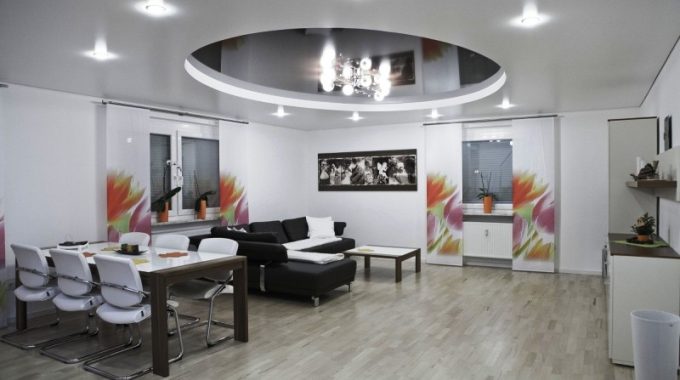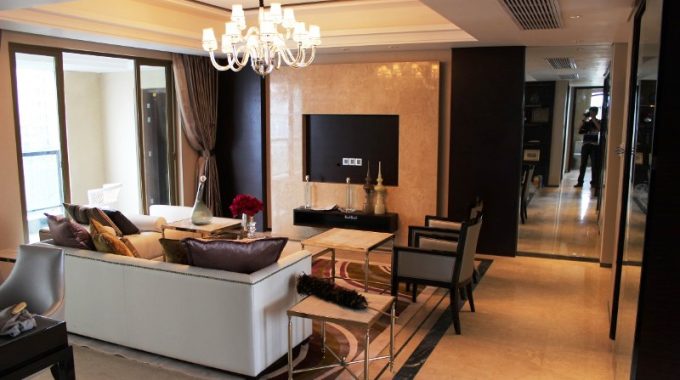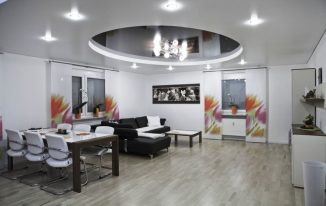5 Reasons to Choose a False Ceiling
False ceilings are back in the limelight and again the star of interior design magazines. Gone are the ceiling tiles of our schools or old office buildings! Today, the false ceiling is a fully-fledged element of the house. It insulates, decorates, conceals, and breaks up lines and volumes. False ceiling, perhaps, but real advantages!
The essential
The false ceiling is ideal for hiding a deteriorated roof and concealing pipes and technical ducts.
It can also improve the insulation of a house.
With a false ceiling, a thousand possibilities of decoration are offered to you: colours, volumes, materials.
What are the characteristics of a false ceiling?
The false ceiling is fixed below the original top, hence its name. However, it is often difficult to see that it is an additional infrastructure. For most of your visitors, it will be impossible to tell the difference between “old-fashioned” plaster and well-laid and painted plasterboard. Two methods exist.
Suspended ceiling
Very simple to install in individual houses, this structure is fixed to the original ceiling by hangers. The visible part of the ceiling is then made of plasterboard, wood, PVC and even glass. The method is very similar to that for installing partition walls. Between the two is the insulation, often glass or rock wool.
Good to know
A self-supporting structure is essential if the ceiling height is too high or the plenum (space between the ceiling and the false ceiling) is too small.
The stretch ceiling
Although the uses are the same, it is a much more complex technique to implement than the suspended ceiling. The principle is slightly different: a fabric, generally in PVC or plastic, is stretched under the original roof. For insulation, the insulation material is placed above the stretched fabric. Ootravaux strongly recommends using a professional to carry out this specific work.
The 5 benefits of suspended ceilings

Advantage n°1: Hide the imperfections of the original ceiling
The first role of a false ceiling, especially in a renovation project, is to hide the existing ceiling. – to hide the existing ceiling. An old, damaged, the stained ceiling disappears, replaced by a beautiful, smooth surface. In a new construction project, the cement slab on the floor above our heads needs to disappear.
Benefit 2: Conceal pipes and ducts
With several centimetres of space available, plumbers and electricians can hide the pipes and cables that run through the house. Ventilation pipes (VMC) also find their place in the plenum. Finally, with the proliferation of air-conditioning systems, this option is perfect for passing exhaust air ducts, which can be up to 25 cm in diameter.
Advantage n°3: Insulation!
Heat rises, as we all know! And poorly insulated ceilings and roofs are the main culprits of heat wasters. There is no point in heating if the heat escapes from the house through the top. You can place any thermal or acoustic insulation in your false ceiling. For sanitary facilities, waterproof insulation and a vapour barrier prevent the appearance of damp stains or mould.
Advantage 4: Light
Of course, plasterboard hanging in a corridor or living room makes it easy to attach ceiling lights and chandeliers without visible cables. The other convenient solution is the integration of recessed spotlights. If you have opted for a suspended ceiling, the craftsman will advise you on specific ranges of fabrics that allow you to make cut-outs for the integration or suspension of lights.
Good to know
For recessed spotlights, avoiding any contact between the LED lamp and the insulation is necessary. Keep a minimum height of 10 cm to allow heat to escape and prevent fire risk.
Benefit 5: Decorate
With the false ceiling, whether suspended or stretched, the possibilities are numerous to give a style to your interior with a wide choice of:
materials;
colours;
volumes.
A wide range of surfaces and possibilities
Suspended ceiling
Plasterboard: probably the least interesting in decoration except with the use of paints other than white.
Panelling: very popular in the 70s and 80s, it is easy to install but very “dated” in its varnished wood frieze version, except perhaps in a chalet where it can give a mountain spirit. It can therefore be very modern. This material is available in slats: long planks to provide a “cabin” feel.
PVC or plastic: you will find the expression “PVC panelling” in catalogues or DIY websites, as it is often a variation of the wood version. One solution to give volume to a room, such as a kitchen, is to use long PVC strips, which provide strength to the vanishing line and thus the impression of enlarging the space.
Glass: you can choose to bring a special light into a room with a light fixture above and a sheet of polished glass. A perfect technique to obtain a diffuse light above a sink.
Stretch ceiling
A PVC or plastic fabric: this is the material most professionals offer for a false stretch ceiling. But you can give this “plastic” a very different appearance thanks to digital printing: wood, stone facing, etc. The possibilities are limited only by your imagination.
No limit to the colours
Except perhaps for bad taste and fashions? But that’s up to you to put the cursor where you want it. The coloured false ceiling is trendy in water rooms, especially with lacquered paints. You can also find the colour in other house rooms: finally, the only limit is that of a colour chart. Certain materials also offer many possibilities with materials that are tinted in the mass, which degrade less over time.
Playing with volumes
The ultimate method for giving character to a large linear room. Playing with the length of the lines makes it possible to change the volumes. This is also a good way of marking the different spaces in a single room with a living room and a dining room.
If you decide to have it installed by a professional, ask for a quote from Ceiling Contractors in Melbourne and don’t forget to share your experience with us!
Read more: The Techniques of False Ceiling Installation


